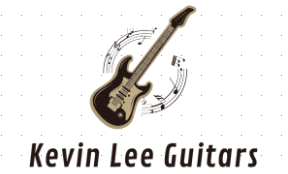Best Guitar Cable for Tone: The Ultimate Guide (2024)
Your guitar cable is the lifeline of your sound—yet many players overlook its impact on tone. The right cable preserves clarity, minimizes noise, and even enhances sustain. But with endless options on the market, how do you choose the best guitar cable for tone?
In this guide, we’ll break down:
How cables affect your tone (capacitance, shielding, and materials)
The top 5 best cables for tone (studio, live, and budget picks)
Myths vs. facts about expensive cables
Pro tips to maximize your cable’s performance
How Guitar Cables Affect Your Tone
1. Capacitance: The “Tone Killer”
- Measured in picofarads per foot (pF/ft), capacitance determines how much high-end your cable rolls off.
- Low capacitance (20–50pF/ft): Preserves sparkle and clarity (ideal for clean tones, jazz, and pedals).
- High capacitance (80+ pF/ft): Darkens your tone (can be good for vintage-style warmth).
2. Shielding: Your Noise Gatekeeper
- Cheap cables often have poor shielding, leading to hum, buzz, and RF interference.
- Dual-shielded cables (braided copper + foil) block noise from lights, phones, and Wi-Fi.
3. Conductors: Oxygen-Free Copper (OFC) vs. Cheap Alternatives
- OFC: Minimizes signal loss, especially over long runs.
- Silver-plated copper: Slightly brighter tone, but pricier.
The 5 Best Guitar Cables for Tone (2024)
1. Best Overall: Mogami Gold Studio (2524)
- Why? The studio standard for a reason.
- Capacitance: ~65pF/ft (ultra-low for pristine highs).
- Shielding: Dual-layer (braided + foil).
- Best For: Recording, pedalboards, and players who demand clarity.
- Price: 60–60–120 (worth every penny).
2. Best for Pedalboards: Evidence Audio Monorail SIS
- Why? Solid-core conductors for unmatched transparency.
- Capacitance: ~30pF/ft (one of the lowest on the market).
- Best For: Effects-heavy rigs where signal loss is a concern.
- Price: 70–70–150.
3. Best for Live Gigs: Van Damme Blue Series
- Why? Rugged, road-ready, and still great-sounding.
- Capacitance: ~75pF/ft (slightly warmer but still clear).
- Best For: Touring musicians who need durability.
- Price: 40–40–80.
4. Best Budget Option: Ernie Ball Flat Ribbon
- Why? Surprisingly good for the price.
- Capacitance: ~85pF/ft (slightly darker but quiet).
- Best For: Gigging players on a budget.
- Price: 20–20–50.
5. Best Vintage Tone: Fender Custom Shop Coiled Cable
- Why? High capacitance (~100pF/ft) for that ’60s Hendrix vibe.
- Best For: Players chasing classic rock/blues warmth.
- Price: 40–40–70.
Myths vs. Facts About Guitar Cables and Tone
Myth: “Expensive cables are a scam.”
Fact: While diminishing returns exist, premium cables (like Mogami Cable) objectively preserve more high-end and reduce noise.
Myth: “All cables sound the same.”
Fact: A/B test a $10 cable vs. a Mogami—the difference is audible, especially with clean tones.
Myth: “Wireless eliminates cable tone issues.”
Fact: Wireless systems have their own compression/tonal quirks. Cables still matter.
Pro Tips to Maximize Your Cable’s Tone
- Keep Cable Runs Short
- Longer cables = more capacitance. Use a buffer pedal if running >20ft.
- Replace Crackling Cables Immediately
- A failing cable can suck tone and add noise.
- Use a High-Quality Patch Cable for Pedalboards
- Cheap patch cables degrade tone in long chains.
- Try a Coiled Cable for Vintage Vibe
- If you want a darker, ’60s-style tone, a coiled cable (like Fender’s) works wonders.
Final Verdict: What’s the Best Cable for Tone?
- For Studio/Clarity: Mogami Gold Studio
- For Pedalboards: Evidence Audio Monorail SIS
- For Live Gigs: Van Damme Blue Series
- For Budget Players: Ernie Ball Flat Ribbon
- For Vintage Tone: Fender Coiled Cable
Upgrade wisely: If you’re serious about tone, start with one premium cable (guitar-to-pedalboard) and hear the difference yourself.

